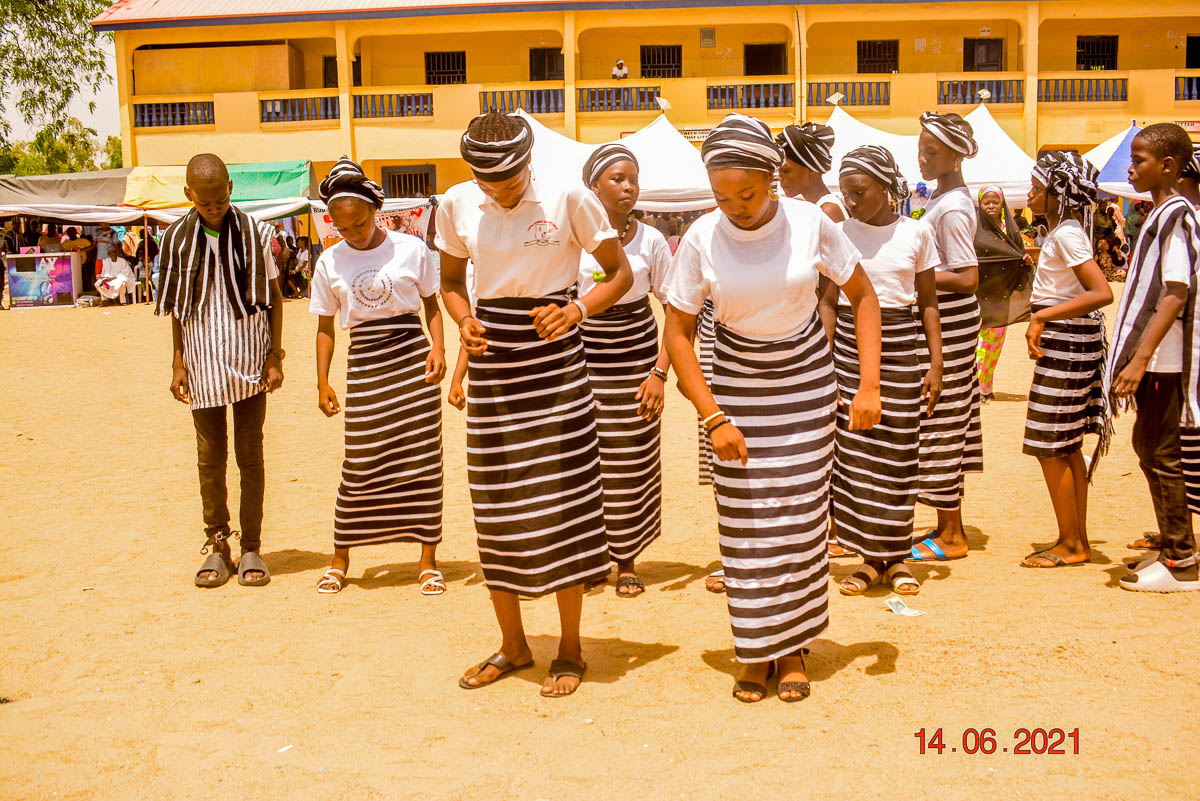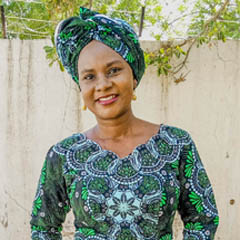Many of the group of pupils that were trained on Bura culture and Bansuwe dance in Ruby Springfield College are from this ethnic group, Bura. However, a good number of these pupils did not have prior experience of the Bansuwe dance. Consequently, the facilitator who taught them the dance relied on videos of Bansuwe dance and songs, played through a computer and a portable speaker, to teach them the dance steps from the scratch. This was accompanied by direct demonstrations and direction by the facilitator. Although the facilitator is not a specialised dance teacher, she is from the Bura ethnic group and a skilled Bansuwe dancer who had been performing for many years.
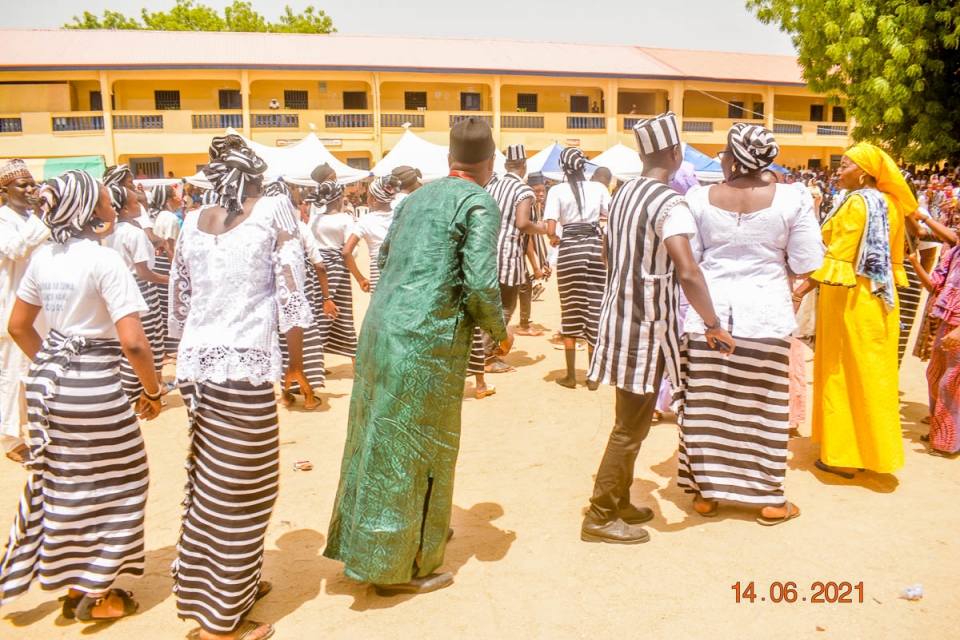
The lady in yellow was a parent of one of the dancers who came to cheer the dancers. The person in green is the principal of the school who also came to cheer the dancers. Cheering of dancers and throwing some money at them is a common practice in Nigeria. It is meant to both encourage and show appreciation to the dancers. (Photo: Karimatu Dauda)
Bansuwe dance is popular among the Bura and is usually the preferred cultural dance at weddings, funerals and other important ceremonies. Yet, the experience in this school shows that there are a good number of Bura people whose children do not know the Bansuwe dance. Part of the reasons for this is that some of the children have never been taken to their villages where cultural practices are better sustained. The Boko Haram conflict in the region also discourages social gatherings which are often potential soft targets of insurgents.
The cultural day events usually involve the presence and participation of pupils’ parents and other guests which makes it a good channel for the sustainability of culture. More girls ended up performing in the dance because many of the boys were unable to pass the final screening for the cultural day. The dancers were dressed in traditional Bura attire called Japta. The audience cheered the dancers and at intervals some would join the dance briefly. This dance was accompanied by traditional Bura music made by drums, xylophone, flutes and vocals.
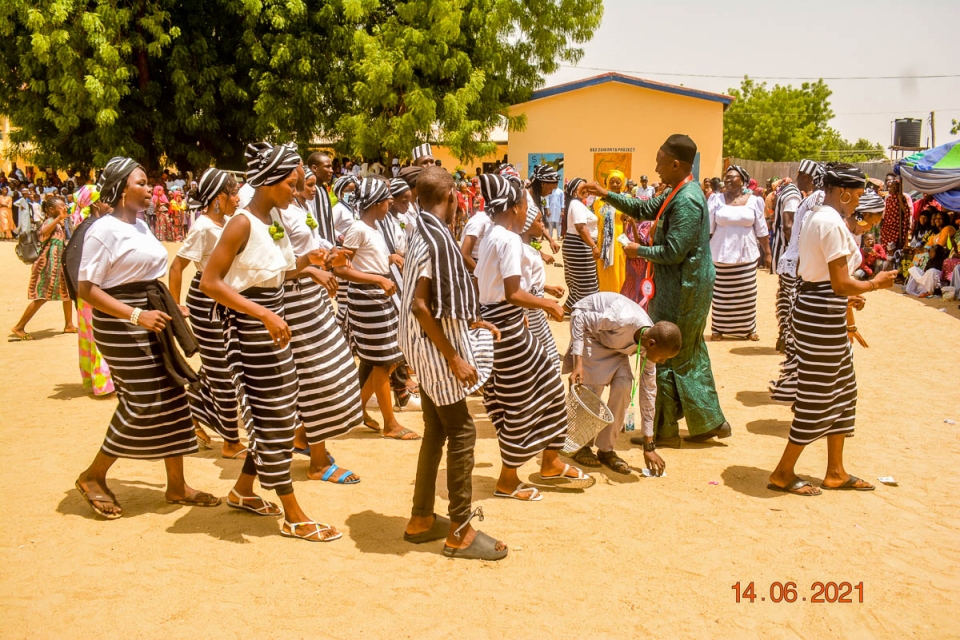
The boy with the basket was picking the money thrown to the dancers by the audience in appreciation of their performance. (Photo: Karimatu Dauda)
The pupils, especially those from Bura, could easily learn more about the Bansuwe dance from their parents and relatives at home. Since dance often carries specific meanings within the social settings it is situated (Pusnik, 2010), there will not be a shortage of what to converse about concerning the Bansuwe dance. Traditional dance in Nigeria is used as a channel for communicating social values, sensitization and even carrying out social sanctions. In addition to these, Bansuwe dance is also used to convey merriment during ceremonies and sadness during funerals and each is reflected by the tone, tempo and messages of the music chosen.
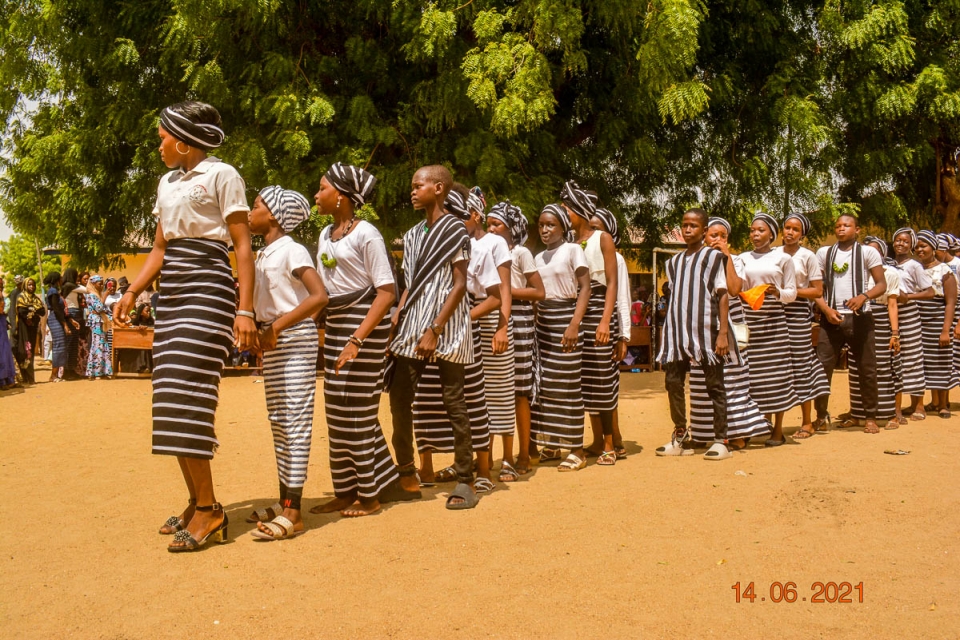
Bansuwe Dance (Photo: Karimatu Dauda)
In the case of the cultural day of Ruby Springfield College, the dance was clearly conveying merriment and the central message of the song was that people should come together as friends and brothers. This message was according to the central purpose of the cultural day which was to encourage mutual cultural understanding among the pupils of the school.
The excitement accompanying the performance of Bansuwe dance by the pupils of Ruby Springfield College is a testimony to the fact that it left a lasting impression on them. This is because, for some pupils, it represented the first time they witnessed and participated in the Bansuwe dance. This enthusiasm by pupils, and even by some parents, is behind the determination by the school to sustain the practice of the cultural day annually. This in turn will ensure that Bansuwe dance is sustained, as younger generations get to learn and participate in it every year at school.
While the annual cultural day cannot be compared to dance subjects formally being taught in the classroom, it is no doubt a contribution to arts education albeit as an extra-curricular activity. It serves as the next best thing in the absence of a dedicated dance subject in the curriculum of schools. In addition, it will be an important space for the sustainability of Bansuwe dance possibly for many generations to come. It is important to sustain this dance because it is one of the few remaining cultural activities which brings together people of all ages, gender, and social status to interact equally on an informal basis. Such a gathering would provide a good space for the conversations on cultural sustainability.
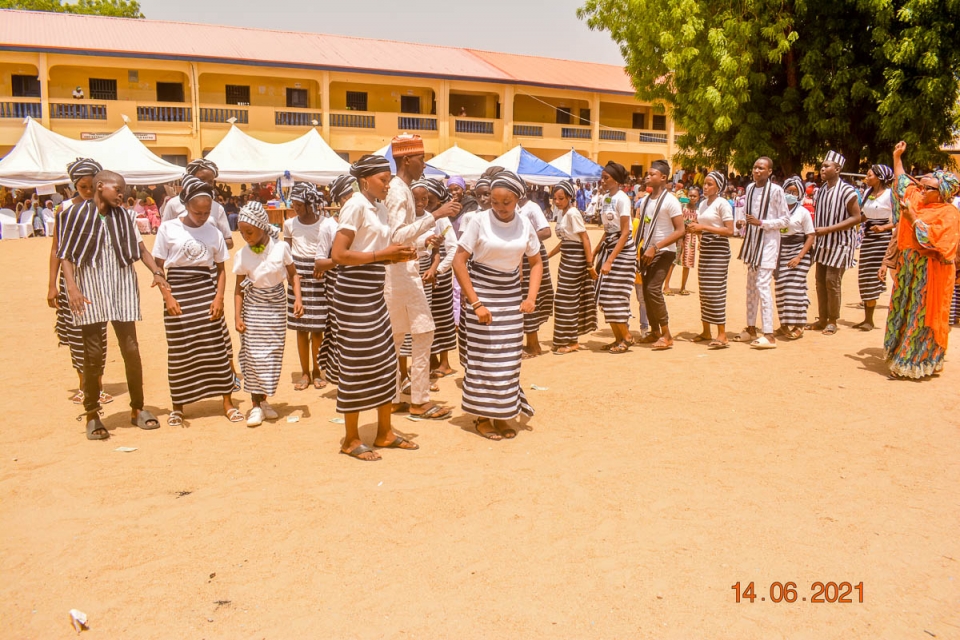
Bansuwe Dance (Photo: Karimatu Dauda)
Arts education is part of the curriculum of primary, secondary and tertiary academic institutions in Nigeria. This does not mean, however, that the teaching of arts is done in every school in the country. The situation is further compounded by the fact that schools offering arts education are often selective about the arts subject they teach. In most schools, fine arts or creative arts make up the totality of their arts education subjects. While their creative arts subject includes lessons in music, dance and theatre, there are also dedicated music and theatre subjects in schools.
In contrast, dance is hardly, if ever, exclusively taught as a subject in formal education settings. Like in many other countries, dance is not taught with the same frequency and depth as painting, theatre or music (Mosko, 2018). Even if there were a dedicated subject for dance education in the country, the hundreds of ethnic groups in Nigeria would make the choice of what dance to teach in formal education settings quite challenging. This is because a typical classroom is made up of learners from diverse cultural and ethnic backgrounds. Generally, arts education in the country is facing a number of challenges, as identified by Enamhe (2013), including the discouragement of children from taking arts subjects by parents, the fear of the perceived difficulty of the creative aspects is arts subjects, and the high cost of materials needed for arts education both for learners and academic institutions.
References
- Enamhe, B. B. (2013). The role of arts education in nigeria. African Journal of Teacher Education, 3(1), 1-7.
- Mosko, S. (2018). Stepping sustainably: The potential partnership between dance and sustainable development. Consilience: The Journal of Sustainable Development, 20(1), 62-87.
- Mtaku, C. Y. (2020). Continuity and change: The significance of the tsinza (xylophone) among the bura of northeast Nigeria. Center for World Music – Studies in Music, Universitätsverlag Hildesheim.
- Pusnik, M. (2010). Introduction: Dance as social life and cultural practice. Anthropological Notebook, 16(3), 5-10.

